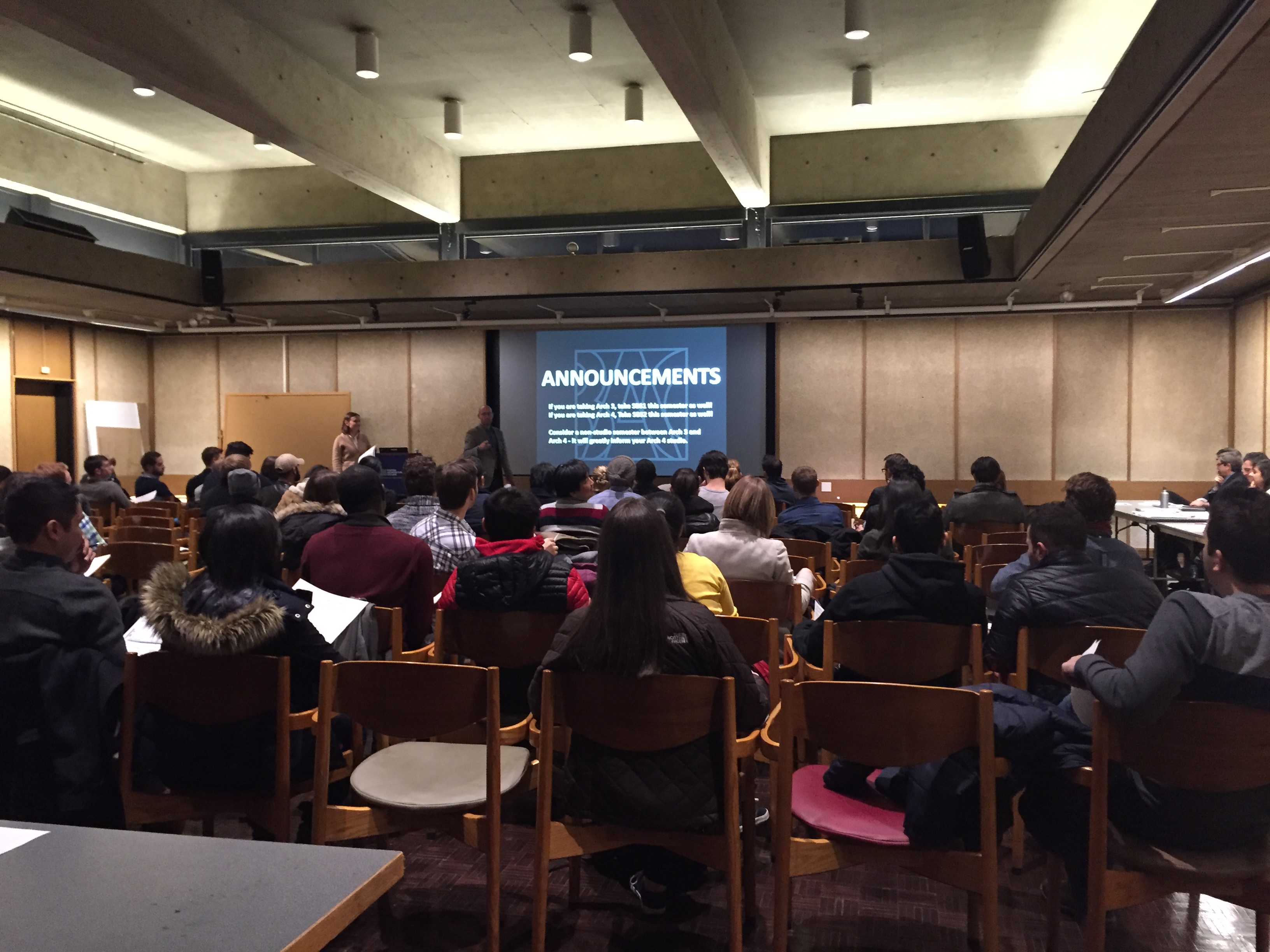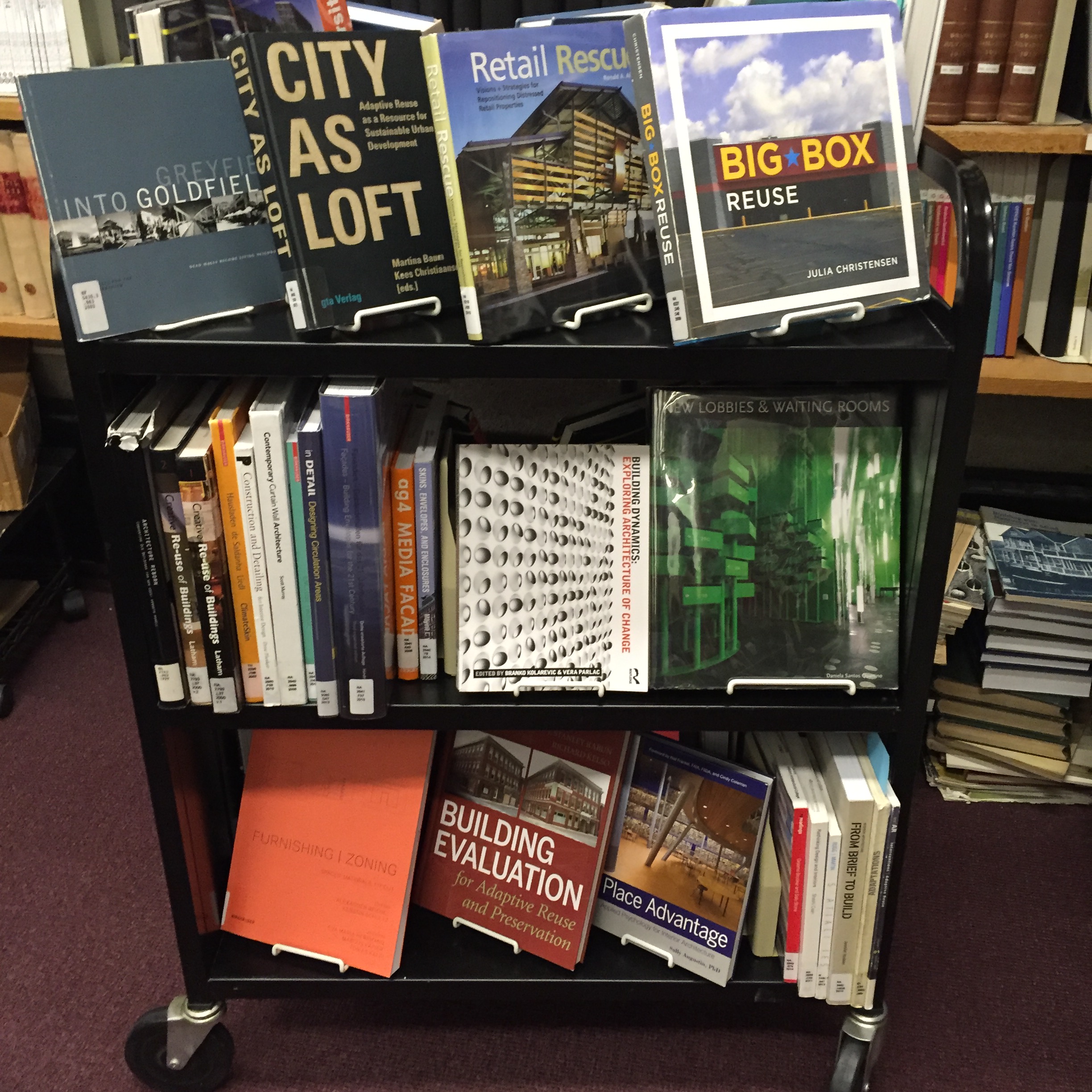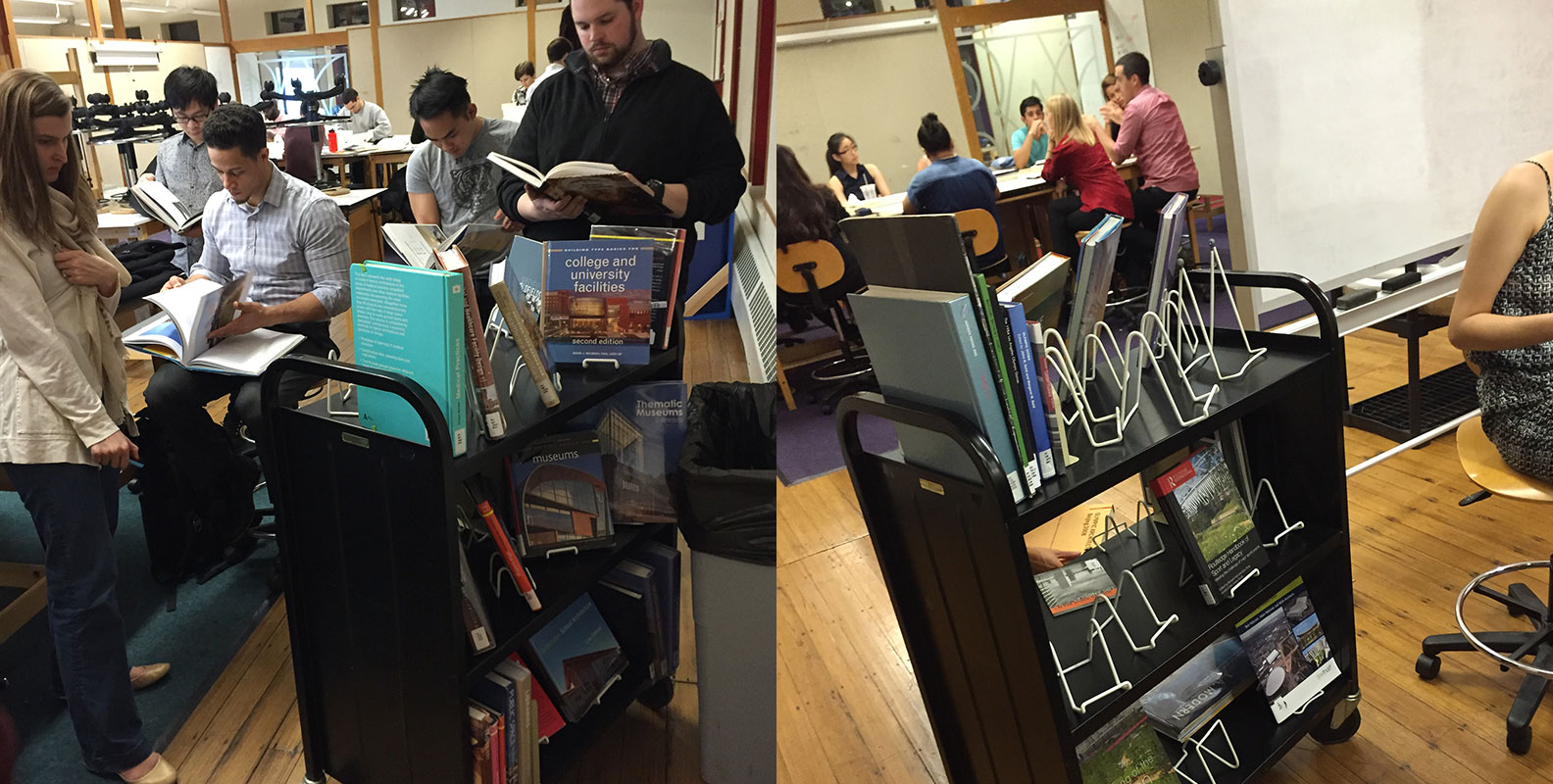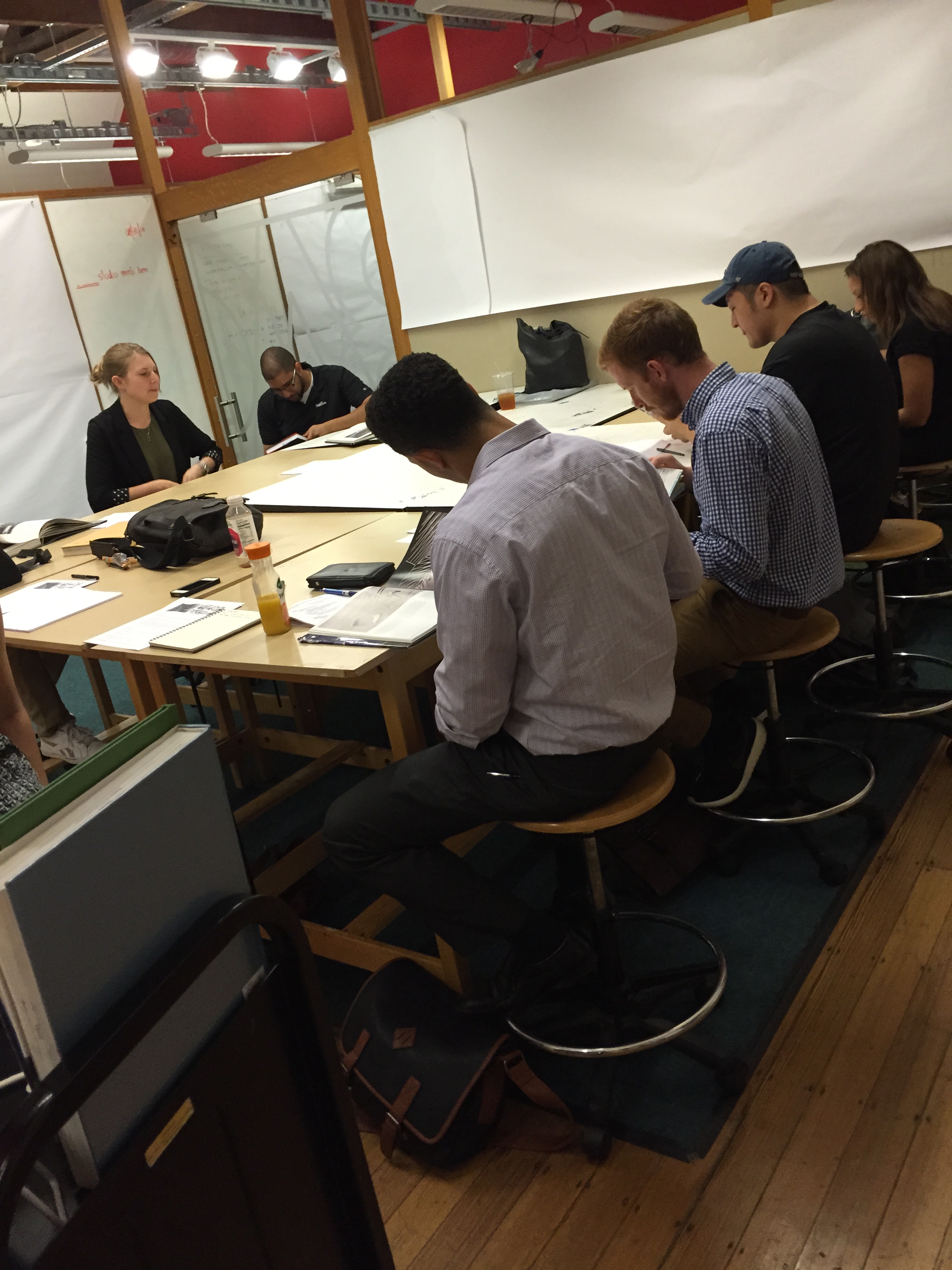AASL Column, March 2016
Barbara Opar and Lucy Campbell, column editors
Column by Robert Adams, Acquisitions and Reserves coordinator, BAC Library
In the past, library collections were often locked up behind brick and mortar, only available to those patrons bold enough to enter. Recently the Boston Architectural College Library, better known as the BAC library, undertook a new initiative to better integrate library resources into studio culture and change the way students accessed the collection. Library staff saw an opportunity to reach out to students who might not be using the library, increase circulation, and boost the library’s visibility with senior administration.
At the beginning of each semester, the BAC hosts an event called Studio Lottery where Faculty pitch their studio classes to the student body. Library staff has been attending these meetings to better understand the core concepts from each studio. Hearing it straight from the faculty, as opposed to seeing it on a syllabus, provides greater insight on future reference questions. The library staff saw additional opportunities–for acquisitions to the collection, outreach for instruction, and creation of specific online course guides.
Studio Lottery showed us there were students who had never visited the library. How could we put our great resources in their hands and help them succeed?
A trusty old library cart was liberated and a plan hatched to make book displays mobile. We targeted studios for which we knew we had great resources, over studios where the focus was more on using the woodshop or the materials lab. Each faculty member was emailed a tailored online guide and photos of the proposed mobile library cart stocked with helpful and appealing books. After a ten minute visit that allowed students to check books out right from the cart, we wheeled out of studio, leaving their hands filled with great books to kick off their research. On average, half the books on the cart were checked out by the students and faculty.
Engaged students and a picked over cart.
With this very successful first effort we achieved our goal of reaching students who were not regular library users. Students actually told us how helpful this was–especially international students who felt uncomfortable searching the library catalog in English. In addition, informal polling of participating instructors revealed our Mobile Library visits improved the quality of student work.
One of the surprising outcomes was impact on our Reserve Collection. Prior to the Mobile Library, studio faculty would visit the library and pull books they knew on the topics they were teaching. This often resulted in dozens of books going on reserve in the hope that students would reference them. It was our experience that few would. The few students who did were faced with the sad fact that the book was on reserve and could not be taken home.
Mobile Library visits introduced faculty to additional resources on their topics, which, combined with the fact students were actively checking out books, caused faculty to rethink their reserve strategies. Instead of placing books on reserve, they are now borrowed, passed around, and better absorbed by more students. This has also cut down on the work load for the Reserves Department, and freed up two whole shelves of Reserve space.
Word has spread about the success of our Mobile Library visits. We have given presentations to the Education and Administration staffs at the college. This has prompted our Interior Architecture and Landscape programs to inquire about visits as well. The fall semester will find us rolling into both studios and classrooms. Now if only we had a better book cart…
Students working in class with their newly acquired books.
Tips
- We found it best to not over-pack the cart. We provide a sampling, not the whole collection. The students are less overwhelmed. They are then more motivated to visit the library to see what else we might offer.
- Having an engaged faculty member makes the difference on how many books get checked out. One who points out why certain books are helpful to a student gets them to check books out.
- We work in teams of two, so that one person can engage the users and answer questions.

 Study Architecture
Study Architecture  ProPEL
ProPEL 



